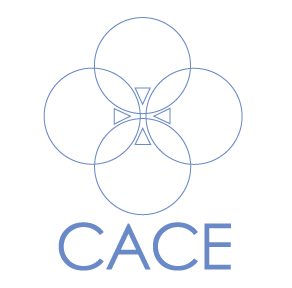 How will ChatGPT change how I teach mathematics?
How will ChatGPT change how I teach mathematics?
Mary Vanderschoot, Ph.D., Professor of Mathematics
In an afternoon of the CACE seminar, the seminar participants tested ChatGPT by asking it questions from our various academic disciplines. I was surprised to discover that ChatGPT would have aced my Real Analysis final exam, and that it provided correct proofs to every problem I gave it from the textbook. I began to realize that I cannot continue to teach my classes as before and deny the existence of ChatGPT. I realized that it is essential that I help my students be aware of ChatGPT’s strengths and shortcomings. I also realized that I need to rethink how I structure my class sessions so that they include more opportunities for active learning. Such experiences should aid students in discovering some of the challenges, rewards, and satisfaction of doing mathematics without reliance on supports like ChatGPT.
A recent article in the Wall Street Journal (Cohen 2023) addressed some of the limitations of ChatGPT in the field of mathematics. The article featured Po-Shen Loh, who is a professor of mathematics at Carnegie Mellon University and Team USA’s coach for the International Mathematical Olympiad. Poh is currently traveling the country, speaking to concerned middle school math students and their parents about the threat of ChatGPT. Poh provides the following simple example illustrating the limitations of ChatGPT’s ability to solve novel problems:
“This machine is the world’s most powerful tool at repeating things that have been done many times before,” he tells students. “But now I want to show you something it cannot do.” Loh asked ChatGPT to find the largest fraction less than ½ with a numerator and denominator that are positive integers less than or equal to 10,000. It was a question that it almost certainly hadn’t seen before—and it flubbed the answer. (It’s 4,999/9,999.) This might sound familiar to anyone who has spent enough time with a chatbot that has a nasty habit of being confidently wrong: It made up a bunch of nonsense and apologized for its errors.
Poh argues that the qualities of creativity and ingenuity are distinctly human qualities, which will always be essential for knowing how to solve problems and even for determining which problems to solve. He states that such skills will be ever more important. Including in-class discussions of this type of article is one way I plan to help my students think about some of AI’s limitations, such as its inability to create new knowledge. I think it is also important for STEM professors to share historical examples from science and mathematics that demonstrate the importance of human creativity to scientific advancement. Knot theory, for example, was originally developed in the 19th century by physicists as an erroneous model for the atom. Though the model was later abandoned, knot theory became a field of study in pure mathematics. More recently, knot theory was found to have significant and surprising applications to several areas of modern science such as string theory and the biochemistry of DNA.
In the mathematics education community, productive struggle describes the state of “actively wrestling with a problem, persistently trying out various strategies, being willing to take risks, being unafraid of mistakes, and progressing incrementally in understanding the underlying ideals…. Over time, through incremental and hard-won victories, this leads to mastery” (Su 121). When a student gives up on a challenging problem and, instead, is tempted to use a tool like ChatGPT to find the solution, not only is she submitting work that is not her own, but her actions have other detrimental effects. For example, she will never know if she could have solved the problem on her own. Productive struggle also gives students the insight that it’s okay not to understand a problem right away, and aids the acceptance that not solving a problem can be as important as solving it.
My class sessions are usually a mix of short lectures interspersed with active learning opportunities. Up to now, homework has been the primary vehicle in which students do/practice the mathematics that they are learning in class. The ease of which ChatGPT can produce proofs to theorems, answers to complex calculations, etc., has caused me to reconsider the importance/effectiveness of graded math homework. I’m eager to try some of the pedagogies of the semi-flipped classroom, in which students are expected to complete an assignment as preparation for a class session in which they work through challenging problems in small groups (without technological aids).
Works Cited
Cohen, B. (2023, May 25). America’s math coach is teaching fifth graders to outsmart AI. This professor is traveling the country with simple advice for an uncertain future: Be more human. Wall Street Journal.
Su, Francis. Mathematics for human flourishing. Yale University Press, 2020.
Contact Us
Center for Applied Christian Ethics
117 Blanchard Hall
501 College Ave
Wheaton, IL 60187
